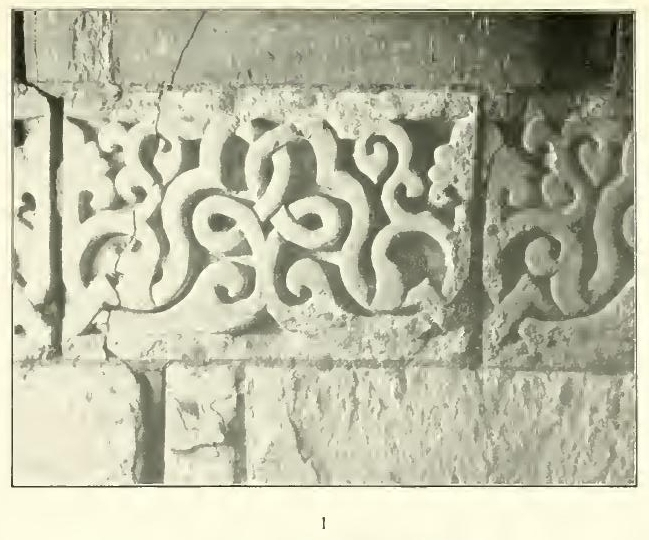
Figure 40. Frieze of tenth register; Flury, Ornamente, pl. 32, 1.
Table of Contents
[Links: Tenth and eleventh registers, Creswell Archive, negative EA.CA.3138 (Creswell, Muslim Architecture of Egypt, v. 1, pl. 30, a); closer view, EA.CA.3139; frieze of tenth register, EA.CA.121 (Creswell, Muslim Architecture of Egypt, v. 1, pl. 30, c); another view, EA.CA.1641.]
 Figure 40. Frieze of tenth register; Flury, Ornamente, pl. 32, 1. |
Of the frieze of the tenth register of the western minaret Creswell wrote: “The tenth band consists of a frieze of arabesque, set in a series of trefoil frames, with a broad plain border above and below. The mouldings which divide off this band lack dentils.”94 In fact, the frieze was apparently intended to be (and in places probably is) an intertwining of two geometric bands interlaced regularly with a foliate composition of two different designs on alternating axes.
The available documentation is mostly of the southwest side. Creswell's drawing of the frieze (fig. 38, bottom) does not match his photographs of it. In the first place, it shows two different, alternating designs beneath the “trefoil frames”, but only the center design actually occurs in any photograph; in its more developed form it is an open trefoil leaf from the tips of which two bands issue, one crossing over the other. In the second place, the details of the drawing of this design do not match the photographs in some respects.95 However, Flury's photograph (and the left side of Creswell Archive negative EA.CA.3138) show a simpler form taking the place of the trefoil leaf: no leaf at all, but just two curving bands, one overcrossing the other. Flury also described some other variation in detail in this frieze.96 So there was some variation in the design, at least as executed, and there could have been some variation in the design as intended; thus the drawing may actually represent some part of this or another frieze not shown in any photograph. However, as I cannot verify it, I largely ignore the drawing and describe the photographed portion of the frieze.
Flury's photograph shows a part of the frieze not seen in any of Creswell's photographs. Flury gave its height as 36 cm., which matches well enough the apparent height of the frieze on Creswell's elevation. This frieze is one of the locations where Flury found color (see “Exterior Color in the Mosque of al-Ḥākim”): “the compartments are painted blue and red alternately”. While Flury did not specify whether it was the foreground, background, or both that were painted, not to mention what he considered to be a compartment, the large flat seven-lobed leaves, for example, would have been good locations for additional painted detail.
The frieze is bordered by flat bands, top and bottom. Slabs of equal width are carved with foliage rendered as flat bands and leaf forms, eased at the sides. Seven-lobed leaves and trefoil leaves atop looping stems (or, simplified, just looping stems) rise on equally spaced alternating vertical axes, the seven-lobed leaves being split by the joints between the slabs. Each seven-lobed leaf (or palmette, as Flury saw them) grows from two stems that join just beneath it and at the same point sprout to either side small stems that grow upward, bearing three or four small leaves, and large leaves, of varied profile, that bend downward. The stems that join beneath the seven-lobed leaves grow from the tips of large half-palmettes lying along the lower border. These half-palmettes grow in pairs from stems on the axes of the trefoil leaves, one of each pair from one seven-lobed leaf axis, the other from the next. In the simpler form replacing the trefoil leaf the stems from which the half-palmettes grow is single (Figure 40); in the case of actual trefoil leaves there are two stems, one for each half-palmette, that cross one over the other on the axis of the trefoil leaf. As they rise along that axis each stem loops over or under itself and returns toward the axis, where the two stems unite (in Creswell's fig. 30, c, the united stem is chipped at this point) and give rise to the open trefoil leaf, from the tips of which two stems grow, one overcrossing the other. In the simpler case the single stem rising along the axis splits into two, which loop over or under each other and then loop under and over to continue like the stems issuing from the tips of the open trefoil leaves.
Just how the stems are arranged at the top of the frieze is apparently varied, although the intended design may not have been. I believe the stems issuing from the tops of the trefoil leaves were intended to connect to the tips of the upper outer leaves growing from the small stems next to the seven-lobed leaves. There is also a completely separate set of bands; Creswell's drawing shows bands over- and undercrossing in the manner of the main entrance frieze, but in a space above that of the stems issuing from the top of the trefoil leaves. This is not the case in his pl. 30, c, but can be seen on the left in his fig. 30, a. There may have been some error on the part of some carver or carvers in interpreting the design in the section shown in fig. 30, c.
Assuming Creswell's drawing is correct in this regard, each of these bands originates at the top of the lower border just right of one of the axes of the seven-lobed leaves, rises diagonally to the right, describes a round arc along the inside of a half-palmette, reverses its curve, forms one side of a cusped arch form, and runs into the top border over another such band; it then runs to the next seven-lobed leaf, where it crosses under another such band, descending in a cusped profile, round arc, and diagonal to the right, ending against the top of the lower border. If the bands actually stopped at the lower border there would be many of them. Obviously they should run into the lower border similarly to the way they run into the top border, in which case I believe there would be only two of them. Unfortunately the points at which these two bands should join the lower border lie at joints between the slabs, and are damaged or obscure in the available photographs.
[Link: Tenth register, southeast side, Creswell Archive, negative EA.CA.122 (Creswell, Muslim Architecture of Egypt, v. 1, pl. 31, a).]
On the southeast side of the minaret the frieze of the tenth register is different from that described in the previous section; it changes at the south corner. The design on this face was neither described nor drawn by Creswell, but is visible in his photograph of the bracing arches above it, Creswell Archive, negative EA.CA.122 (pl. 31, a).
In discussing how and where the southwest wall of the mosque met the western minaret, Creswell wrote of the southeast side of the minaret,
Each band of decoration stops dead at a distance of 1.25 m. from the south corner, to the right of which is a space about 1.60 m. in width where a wall, bonded into the minaret, has been broken away. A beam, which must have been set into this wall near its summit, can still be seen projecting from the minaret (Plate 31 a).97
Creswell's discussion of the decoration of the southeast side of the minaret also identifies this plate as showing that side, remarking the change in ornament at the south corner.98
The beam Creswell mentioned projects from the wall above the frieze at the top of the tenth register in his photograph, which shows clearly only the part of the southeast side of the minaret that projected from the exterior wall of the mosque.
The frieze here appears to be formed of a wide ungrooved band intertwining with itself to form lozenges filled with self-interlacing elements. The pattern occurs in stacks of two, with a small hexagonal loop between them, and there are three preserved stacks, with space in between apparently wide enough for two more; however whatever was carved here has apparently been effaced (which is exceptional in the Mosque of al-Ḥākim; perhaps this slab is of poor stone and has spalled). Possibly in the farther set the lozenges are connected horizontally as well as vertically.
The salient characteristics of this frieze are:
It is an intertwining of two geometric bands interlaced regularly with a foliate composition of two different interconnected designs on alternating axes. The geometric bands are entirely separate from the foliage.
There is considerable variation in the design as executed, and possibly in the design as intended.
Errors may have been made by carvers in interpeting the design as it was laid out for them.
The composition was painted alternately blue and red, but just how is unclear.
The design is carved on slabs of equal width and the equally spaced vertical axes of the design fall on the joints between the slabs and in their centers, as with the palmette frieze of the northern minaret.
All the elements of the composition are flat, eased along the sides; there is no grooving or internal detail.
The bands forming the geometric part of the design apparently were intended to join the top and bottom borders in the manner of the main entrance frieze.
The tips of the open trefoil leaves turn into bands that cross one over the other, as in the main entrance frieze and the palmette frieze of the northern minaret.
Bands rise over the tops of alternate foliate elements.
There is no direct integration of foliate and geometric elements of ornament and no obvious division of the design into horizontal registers (although an inconspicuous division into three such registers can be discerned).
An entirely different design, without direct parallel in the Mosque of al-Ḥākim, was applied to the southeast side of the frieze.
[Link: Frieze of the third register, Creswell Archive, negative EA.CA.129 (cf. Muslim Architecture of Egypt, v. 1, pl. 28, c).]
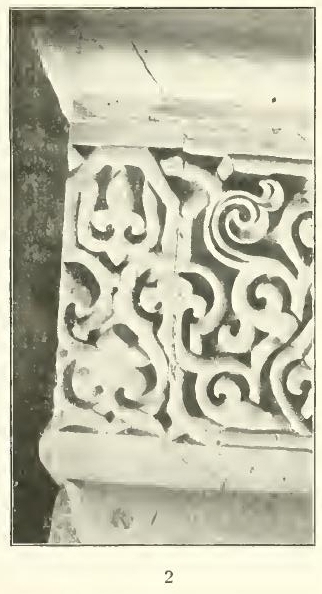 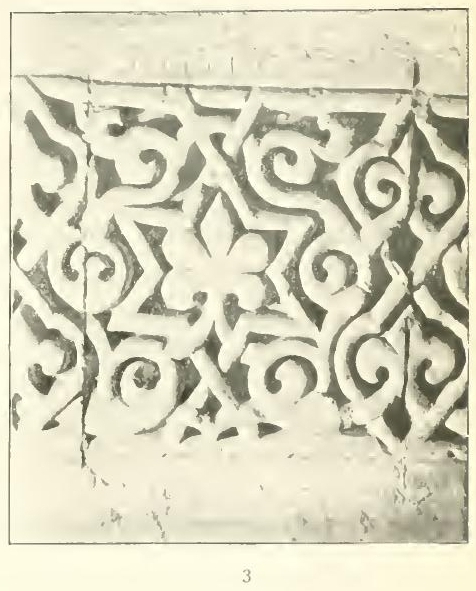
Figure 41. Frieze of the third register; Flury, Ornamente, pl. 32, 2 and 32, 3. |
The frieze of the third register of the western minaret is carved on slabs of more than one width (as only short sections have been published it is not clear whether most of the slabs are the width of the two at the left in the Creswell negative linked to above, which are close to the same width, or whether they vary routinely). It is composed of flat bands and foliage, eased at the edges, with the exception of a single grooved detail. A set of bands of equal width forms six-pointed stars separated by stacks of two shield-shaped elements. A separate stem set, its stems the same width as the geometric bands, encircles the stars with ornate leaves and fills the centers of the stars and shield-shaped elements with five- and three-lobed leaves. The design is not continued regularly around the corners.
Flury gave the height of the frieze as 45 cm.99 He noted the change in the design at the left end of the side he illustrated (Figure 41), and drew attention to the grooved stem and split leaf just to the right of the change. Creswell's pl. 28, c, shows a different change in design at the right end of the same side; Flury's illustration is a photograph of the second slab from the right in Creswell's plate. Flury speculated without drawing any conclusion that originally the same grooved treatment may have been intended for all the foliage, but was omitted in order to finish the work faster. I do not believe grooving would have been executed in a separate phase of carving, although it might have been simulated in paint.
As with the frieze at the top of the tenth register the available documentation is of the southwest face. Creswell's drawing (fig. 37) is again faulty. It fails to show the continuous borders and spaces the six-pointed stars too widely. In fact, the design is constructed on a regular lattice of equilateral triangles (or their geometric equivalents); a six-pointed star of equal size can be constructed between and touching the tips of two actual stars on Creswell's photograph, but not on the drawing.
In some respects the overall construction of the design is unlike any other in the Mosque of al-Ḥākim. It consists of two geometric designs alternating with each other, like the frieze at the top of the tenth register, but not rising from and falling to the bottom border as in that frieze. The foliage interlacing with the geometric composition is unique. It is as thoroughly worked into the geometric composition as in the main entrance frieze, but it forms generally circular groups (around the stars) which, while not derived from an alternation of foliate forms (such as the lotus and palmette), are not entirely adapted to the circular theme (it has no symmetry of rotation around the centers of the stars and none with respect to a horizontal axis). The foliage, which maintains a sense of uprightness in the five- and three-lobed leaves, also rests half-palmettes on the bottom border, as in the frieze at the top of the tenth register, which are not repeated at the top. There is nothing like this composition at Madīnah al-Zahrā', nor, so far as I can see, in any earlier Islamic art.
Geometry. The bands of the geometric designs run into the top and bottom borders in the manner of the main entrance frieze. How they were meant to be organized is not possible to determine with certainty given the small sample photographed and its condition (see “Interlacing”, below).
Similarly, two bands rise diagonally from the same point on the bottom border to form the left and right sides of the lower of the two shield-shaped elements, each side of which consists of a straight diagonal segment, a section of a circle running to a cusp, and another straight segment; the last crosses over the corresponding band, right over left, and the process is repeated before the bands run into the top border.
Foliage. The foliage rises from pairs of half-palmettes lying along the bottom border and alternating in direction of growth; they can be seen as pairs tip-to-tip or pairs base-to-base. From the tips of two half-palmettes, elongated as short segments of stems, a three-lobed leaf grows, filling one of the lower shield-shaped elements. Near its base each half-palmette is linked to another by a short, slightly cusped segment of what must be meant as a stem, which touches the bottom border at its cusp but passes behind both leaves and disappears. Each half-palmette grows from a stem that appears from behind it, rises in a curve, and branches in two. The stem that continues the curve curls around toward a six-pointed star and splits, one branch leading to the half-palmette, the other to a five-lobed leaf within the star, which also grows from the corresponding stem of the half-palmette linked to by the short cusped stem. The other branch of the stem that rises from behind the half-palmette reverses curve away from the star, rises into the middle of the frieze, and branches, then branches again (as the stem did after rising from behind the half-palmette). The first branch unites with the corresponding branch of the tip-to-tip half-palmette's branch in a three-lobed leaf in the upper shield-shaped element. The second branching produces a curled split leaf and a stem that follows a reverse curve around an upper outer corner of a star, throwing off a half-palmette and uniting with the corresponding stem of the base-to-base half-palmette in a semicircular curve over the top of the star. This foliage is notable for its use of sections of circles rather than cusping arcs.
Interlacing. I doubt that the over- and undercrossings in Creswell's drawing are correct, but I do not know what section of the frieze it is meant to represent. So far as I can see, as regards the geometry, and viewing the design as ascending, the bands forming the six-pointed stars cross right over left below the stars and left over right above. The first of these bands connects to the top and bottom borders in segments both of which run to the right, the second in segments both of which run to the left.
Between the two shield-shaped elements the bands cross right over left; this is clearer to me for the rightmost pair of shield-shaped elements in Creswell Archive negative EA.CA.129 than in Creswell's pl. 28, c. In the middle pair of shield-shaped elements in both photographs the bands cross right over left at both the bottom and top borders. The overcrossing bands then run in opposite directions.
The top and bottom borders are thus crowded with multiple bands, only one of which can be visible at a time. I have not found a clear solution for interpreting them.
Possibly the star bands are never connected with the bands of the shield-shaped elements, and form links (topologically), while the bands of the shield-shaped elements intertwine. Or there may be some more complex interlace.
The foliage does not interlace with itself. It seems in general to run under then over the geometric forms, right to left, except for the short cusped linking stems, which overcross both of the bands rising to form the stars.
Variation at Corners. At the right side of the southwest face (Creswell Archive negative EA.CA.129, Muslim Architecture of Egypt pl. 28, c) the last stack of shield-shaped elements, which is split down the middle by a masonry joint, is not followed by a star, although there is room for half of one. Instead, half of a three-lobed leaf, the same size as and only slightly above the level of the fived-lobed leaves filling the stars, stands at the corner, and the space to its left is filled with a thicker version of the foliage to the left of the stars. At the left side (Figure 41) a different solution is to be seen: the last stack of shield-shaped elements is followed by the usual foliage, but then the top and bottom borders turn inward and meet, detouring to form the right half of a compartment round above and ogival below, filled with a continuation of the foliage. The last slab completes that compartment and contains a stack of two others, also filled with a continuation of the foliage, which seems to turn the corner at a three-lobed leaf. At both ends, then, the regular progression of the design is needlessly abandoned and different solutions drawing on the elements of the main design are substituted.
The salient characteristics of this frieze are:
The frieze is carved on slabs of unequal width.
It is carved in flat bands and foliage, except for one detail.
It is not carried regularly around the corners; instead, two different variations are applied at the outer ends.
The geometric design does not rise from and and fall to the bottom border, although the shield-shaped elements are adjusted to the shapes of their foliate fillers, which are shown upright, and in this way the geometric design may be said to have an orientation.
The geometric design is laid out on a lattice of equilateral triangles or their geometric equivalents.
Like the frieze at the top of the tenth register of the western minaret the geometric composition alternates between two designs.
The design of the foliage is unlike other foliage in the Mosque of al-Ḥākim in forming rings around the stars of the geometric design. Nevertheless, it maintains a sense of uprightness and has no symmetry of rotation around the stars and no symmetry of reflection with respect to a horizontal axis. In these respects there is nothing like it in earlier Islamic art.
The foliate and geometric designs are not connected, as with the frieze at the top of the tenth register of the western minaret; there is no direct integration of foliate and geometric elements of ornament.
The bands of the geometric design run into the top and bottom borders in the manner of the main entrance frieze.
The foliage uses sections of circles in preference to cusping arcs.
The geometric design contains interlacing, but the foliage does not, although it interlaces with the geometry. The overall pattern of interlacing is obscure due to the small portion of the frieze published and its condition. A suggested interpretation (above) is only that.
If there are errors in execution of the design I cannot detect them in the short sections published.
[Link: Fragment of parapet at top of square section, Creswell Archive, negative EA.CA.125 (Creswell, Muslim Architecture of Egypt, v. 1, pl. 32, c).]
Near the top of the square section of the western minaret, on the southwest face, there is what Creswell called “a sort of blind tracery”, which he reconstructed as “an elaborate open-work cresting”, 1.10 m. high.100 It seems to have been a sort of parapet, of which a thin vertical section next to one of the later arches bracing the surrounding masonry and a length of the lowest part have been preserved. Creswell published a photograph of the vertical section (pl. 32, c), a drawing it with reconstruction of the design (fig. 38, next to top), and a drawing (fig. 41) that includes a section of the lowest part. If I understand correctly this lowest part was carved into solid stone while most of the upper part of the vertical section stands in front of masonry that is stepped back behind it (it also appears in Creswell's elevation of the minaret, fig. 40, which confusingly does not show the bracing arch).101 From Creswell's account of the room in the base of the octagonal section (for which see “The Niched Room in the Western Minaret”) it seems that the top of the square section was inaccessible from the arch opening from the room to the exterior, which means it was inaccessible; thus the parapet serves no safety function.102
Creswell's description of the parapet as “blind tracery” appears to be correct and “open-work” merely suggestive. The lowest section is certain not open or pierced, and it seems to me from the photograph that the upper part was in fact be carved in deep relief (note the shadows).
The design is composed of broad bands grooved close to each side, in straight segments, reverse curves, and cusped curves, mostly employing sections of circles.103 The bands run into a bottom border in the manner of the main entrance frieze. There is no foliage.
Creswell's drawing shows as extant a bit more than is visible in his photograph, and the proposed reconstruction is highly speculative; I think the remains are too incomplete for analysis. Comparing it to the crestings of Cairene stucco mihrabs, which it resembles, I think the reconstruction is probably too complex (the design should repeat more regularly), but I have none to offer myself. In any event, the design has a clear sense of upward directionality: it seems to rise from the bottom to the top.
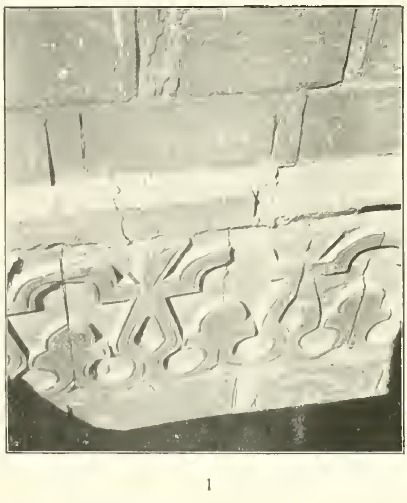 Figure 42. Frieze at top of sixteenth register (Flury, Ornamente, pl. 34, 1). |
A frieze at the top of the sixteenth register of the western minaret is unlike any of the other carved stone ornament except the parapet just discussed, which it resembles in its wide bands, grooved at both edges, rounded curves, and its appropriateness to the top border of its section of the western minaret, which steps back above it.
The design is composed of repeating forms arranged so that every pair of adjacent slabs constitutes a complete subset of the whole. For sake of description I assume that the form broken at the corner, at the left of Flury's photograph, above, and Creswell's pl. 32, b, is the central element. It is a semicircular loop of wide band springing from two horizontal segments of band, which connect on either side to coördinate bands in the next elements, together sprouting a sort of flat-topped but trilobed leaf in between the loops. Below the horizontal segments of band the same bands continue, angling inward to nearly circular loops at the bottom of the frieze, which abut coördinate loops of the next elements and join to grow large flat pointed trilobed leaves filling the areas below the upper loops. The bands forming these lower loops are noticeably compressed in width toward the thin, flat, lower border.104
This design is certainly Samarraesque, but I have not found (or perhaps not recognized) a Samarra comparison; superimposing one of these bands on another would not produce the sort of integration often seen at Samarra. See Figure 14 and the illustrations below for my closest matches. (I include Figure 46 for its angular components and as it has always been my favorite Wandschmuck illustration because of the dog.)
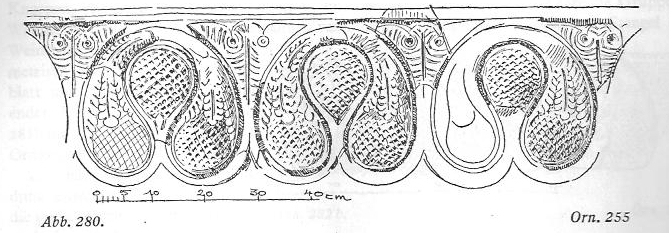 Figure 43. Samarra, ornament 255 (first style); Herzfeld, Wandschmuck, fig. 280. |
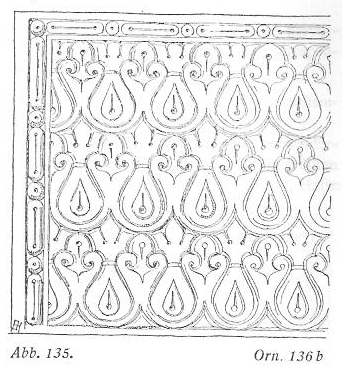 Figure 44. Samarra, ornament 136b; Herzfeld, Wandschmuck, fig. 135. |
 Figure 45. Samarra, ornament 44; Herzfeld, Wandschmuck, fig. 54. |
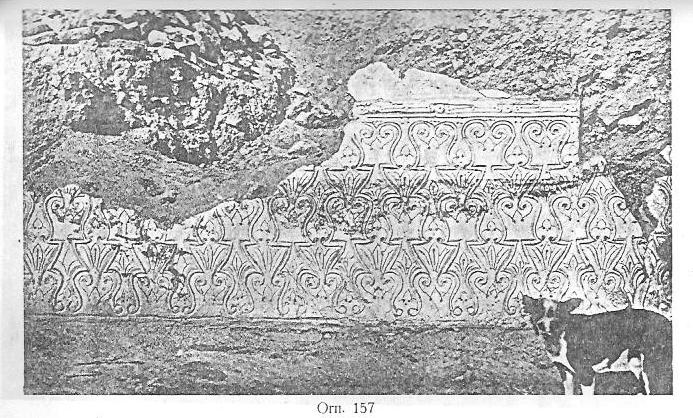 Figure 46. Samarra, ornament 157; Herzfeld, Wandschmuck, pl. 54, top. |
The inscription of the eighth register of the western minaret begins at the south corner. On the short southeast side of the minaret, in its place, are what Creswell called “two panels and a half formed of a fine bold piece of ornament repeated two and a half times.” For illustrations see the links in “The Dentil Borders of the Seventh and Eighth Registers of the Western Minaret” and Creswell's pl. 29, b. The full design is composed of two S-shaped grooved stems that rise from coils at the bottom of the field, from which a hollow leaf rises; the stems rise around that leaf and meet, terminating in split leaves in the upper corners. There are small leaflets at the top center and along the upper and lower borders. In one panel the stems are bound by little double rings, in the other not; and it is unclear whether they are meant to be seen as growing together or not. All the leaves are hollowed out.
94. Muslim Architecture of Egypt, v. 1, p. 96.
95. For example, the drawing shows the cusped bands that loop over the trefoil leaves running into the band forming the top border, as in the main entrance frieze, but the photographs show that top border completely separate.
96. Flury, op. cit., p. 48; just what is described is obscure to me, but it involved five-lobed palmettes (or leaves) that appear neither in photographs nor in Creswell's drawing.
97. Muslim Architecture of Egypt, v. 1, pp. 88–89.
98. Ibid., p. 98.
99. Flury, op. cit., p. 47.
100. Op. cit., v. 1, p. 96.
101. For the relationship of the section shown in fig. 41 to the rest of the structure see ibid., pp. 98–99.
102. Loc. cit.
103. For actual openwork designs in stone using a similar repertoire, see Klaus Brisch, Die Fenstergitter und verwandte Ornamente der Hauptmoschee von Córdoba (Madrider Forschungen, v. 4), Berlin, 1966, pl. 7 and 43.
104. I thank Lorenz Korn for help in analyzing this pattern.